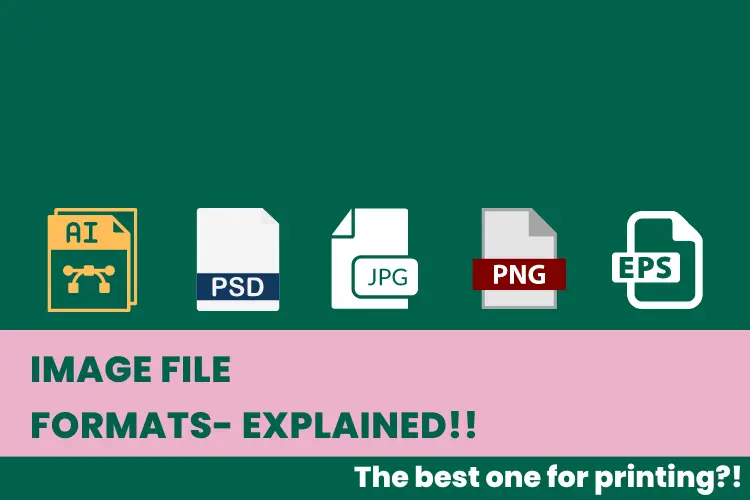
When it comes to printing artwork, the importance of choosing the correct file format cannot be exaggerated. Not all file formats are created equal, and selecting the wrong one can have a major impact on the final quality of your printed product. This is why it is crucial to carefully consider which file format you use when uploading your artwork for printing.
Vector File Formats
For designs that call for high-quality graphics, like logos, illustrations, or diagrams, vector file formats are the best option. Vector graphics are specifically made to handle the sharp, precise lines and curves that are typically required for these kinds of designs. A series of lines, curves, and shapes that are defined by numerical values are used to create vector graphics because they are created through mathematical equations.
AI (Adobe Illustrator)
Graphic designers, illustrators, and artists use Adobe Illustrator to produce excellent vector graphics. As previously mentioned, vector file formats are ideal for designs that call for high-quality graphics, such as logos or illustrations, and one of the most widely used file formats for vector graphics creation is AI (Adobe Illustrator).
The ability to edit the original design while maintaining quality is one of the main benefits of using AI files. This implies that the design can be easily adjusted, edited, and scaled even after it has been created without lowering the quality of the image. For instance, if your company logo is in an AI file, you can easily change its colour, size, or shape without sacrificing the logo's quality.
EPS (Encapsulated PostScript)
Another widely used vector-based file format in the printing industry for producing top-notch graphics, logos, and illustrations is EPS (Encapsulated PostScript). Most vector-based design software, including Adobe Illustrator and CorelDRAW, supports the editing of EPS files. The versatility of EPS with numerous printing techniques is one of its main advantages. It is a great option for projects that need to be compatible with different printing processes, like offset printing or digital printing, because of this.
Raster File Formats
For designs with photographic components, such as photographs or digital paintings, raster file formats are ideal. Raster graphics are composed of pixels, and the resolution of the image affects how well they look. The most popular raster file formats for printing are as follows:
JPG (Joint Photographic Experts Group)
JPG is a commonly used compressed raster file format for photos and digital images. JPG has the benefit of producing high-quality images with small file sizes. If the image is saved at a low resolution or is compressed too much, there could be a quality loss as a result of the compression. JPG files should not be used for designs that need transparency or editing. That being said, if you have a high-quality JPG file with a high resolution and have designed it specifically for t-shirt printing, it can still produce great results. It's important to make sure that the image is saved at a high resolution and is not compressed too much to prevent loss of quality.
PNG (Portable Network Graphics)
PNG is a popular raster file format for web graphics and digital designs that supports transparency. PNG has the benefit of producing high-quality images with a small file size and transparency without a background. PNG files' lack of colour depth and resolution make them unsuitable for printing photographs.
PSD (Adobe Photoshop Design)
Adobe Photoshop is used to create the raster file format known as PSD. It is perfect for designs that need sophisticated layers and editing tools. PSD has the benefit of enabling non-destructive editing of the original design. JPG, PNG, and TIFF are just a few of the formats in which PSD files can be saved.
Which File Format is the Best?
The type of artwork you have and the intended use of the finished product will determine the best file format for your design. AI or EPS are suggested for vector-based designs like logos and illustrations. Depending on the desired output, PSD, JPG, or PNG can be used for raster-based designs like photos or digital paintings. It's important to remember that using the highest resolution possible when submitting files for printing will ensure the best print results.
In conclusion, selecting the appropriate file format is crucial for creating printed products of the highest quality. Understanding the various file formats that are available and their benefits will help you decide which file format is most appropriate for a given situation.
